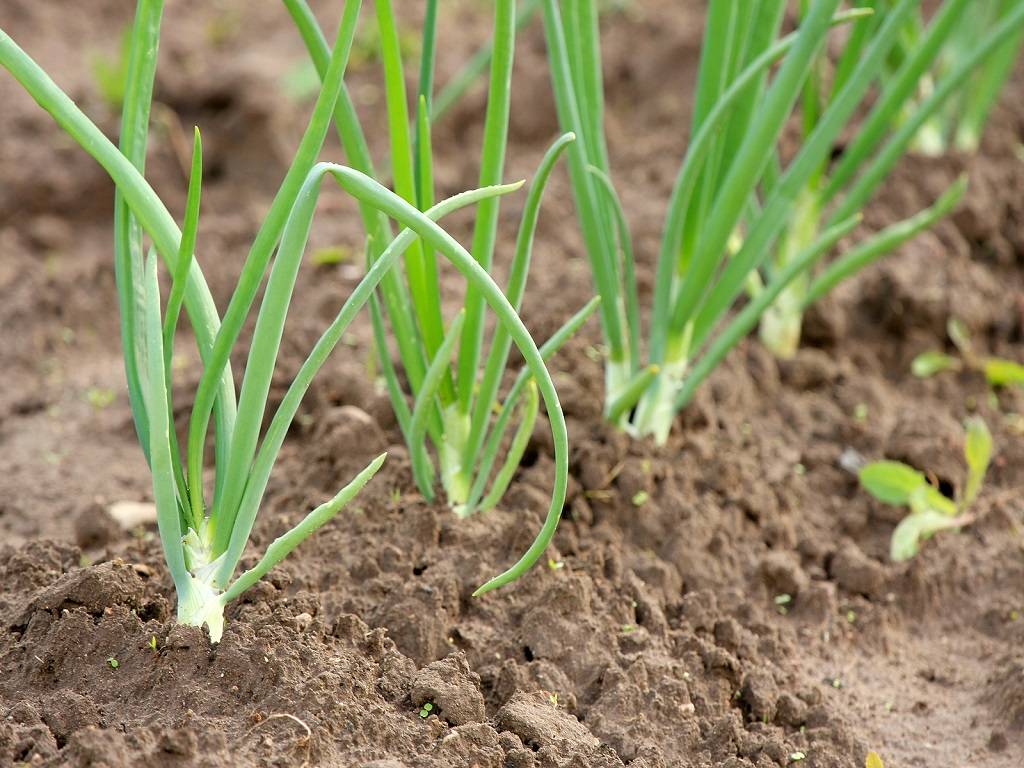
Green onions are one of the most commonly used vegetables in the kitchen, but did you know they're also one of the quickest and easiest vegetables to grow? Also, did you know that you can grow green onions from a variety of onions? The tender stalks and leaves of this crop are grown for their mildly sweet onion taste.
This crop is grown for its tasty greens and soft stems, not for its bulbs. As far as green onions go, there are two varieties:
Bulb onions (Allium cepa) - Bulb onions are cultivated for their bulbs, which can be yellow, red, or white, but they can also be planted to produce green onions. For this, harvest the stalks and leaves when the plants are still immature and before the bulbs develop. The leaves of bulbing onions can become hard and unpalatable if you wait too long to harvest them.
Scallions or bunching onions (Allium fistulosum) – They are a popular variety of green onions that can be produced as annual or perennial plants. Green onions are harvested as an annual vegetable around two months after sowing for conventional green onions.
They don't produce bulbs, but if they're left in the garden during the winter, they'll create a clump of spiky hollow leaves that will last for years and flower in the summer. Scallions are hardy perennial plants that may be grown in zones 5 to 9.
Where should green onions be planted?
Green onions, like other vegetables, thrive in full sun, so choose a location that receives at least 6 to 8 hours of direct sunlight each day. The soil should be rich in nutrients and drain effectively. Growing green onions on raised beds is great. Remove any weeds and cover the bed with an inch of compost once you have decided on a location. If your soil isn't very rich, a slow-release organic vegetable fertilizer can be added before planting to provide a consistent supply of nutrients.
When to plant green onions?
In late January, sow green onion seeds in a cold frame or polytunnel. You can start planting in early to mid-spring and then seed again in mid-summer to supply excellent green onions for harvesting in the autumn. If the cold hardy plants are planted in a season extender like a cold frame, gardeners in zones 5 and higher can enjoy green onions throughout winter. If you don't have a season extender, you can use straw or shredded leaves to cover the plants in late October to extend the harvest into the winter.
How to grow green onions?
Because green onions have thin root systems that dry up rapidly, keep the soil mildly wet. Check the soil at least twice a week, especially if the weather is hot and dry.
When required, water deeply. Straw mulching around the plants decreases the need to water and keeps weeds at bay. Weeds don't compete well with slender green onion plants, so if you don't mulch the bed, eliminate weeds as they appear. To make watering quick and straightforward, you may choose to run soaker hoses beneath the mulch.
Using a garden hoe, hill up the soil around the plants numerous times during the growing season to produce longer stalks. If you followed the deep planting approach described above, you won't need to do this.
When and how should the crop be harvested?
If you're new to growing green onions, you'll be relieved to find that a patch of plants will provide you with a long harvest season. Green onions can be harvested in a variety of ways; here are the three methods you can use:
-
You can start harvesting the plants as a baby crop when they're only 8 to 10 inches tall, and they have a mild, sweet onion flavor at this point. Use the chance to thin between immature plants while plucking them to allow the remainder of the green onions to develop.
-
You can remove a few leaves from the plants that will continue to grow for future harvests if you only need a tiny amount for the kitchen.
-
Use a garden fork or trowel to loosen the entire plant from the soil if you want the stalk and leaves. If you try to pull it out of the ground, it will bruise, injure, or break the stem.
















